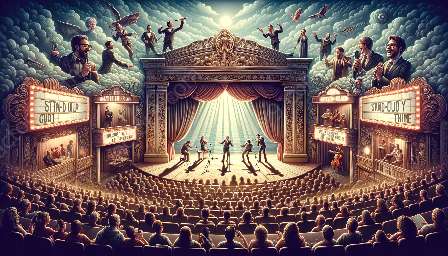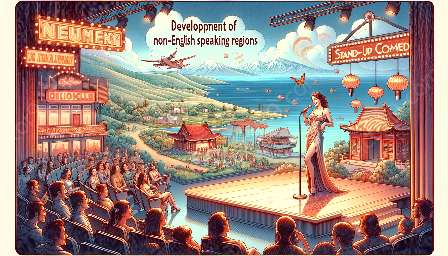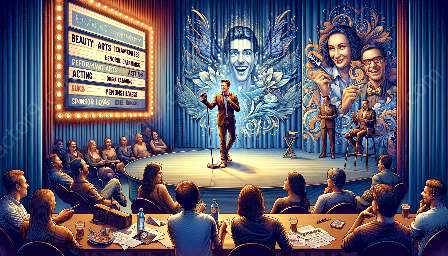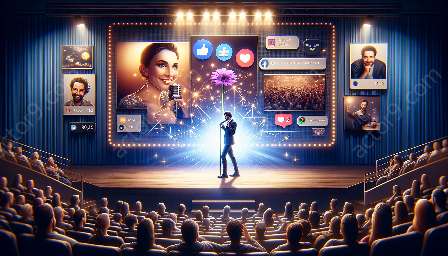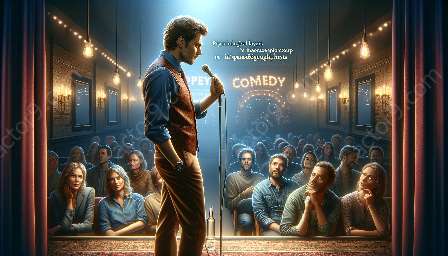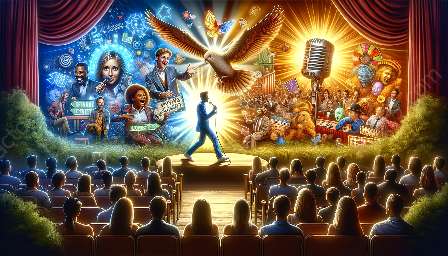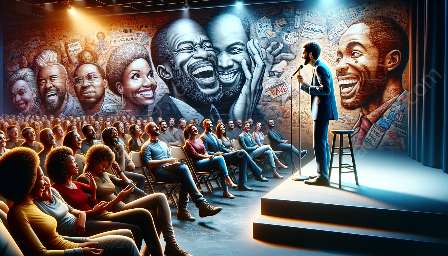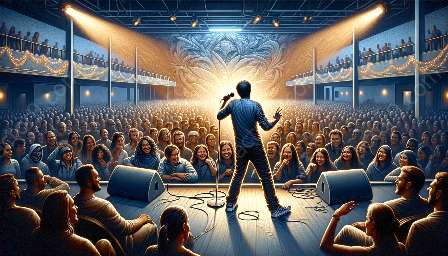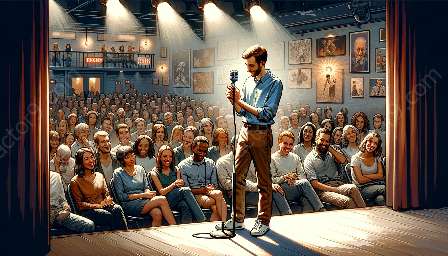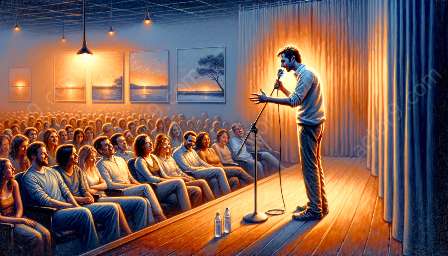Introduction
Stand-up comedy and social commentary have always been reflections of the society and culture in which they exist. With the advent of technology and the rise of social media, both art forms have evolved significantly, impacting not only the way comedians and commentators connect with their audiences, but also the content, reception, and reach of their work.
Impact on Stand-Up Comedy
Technology and social media have revolutionized stand-up comedy in various ways. Comedians can now reach a larger and more diverse audience by sharing their performances online. Platforms like YouTube, Twitter, and Instagram have allowed comedians to bypass traditional gatekeepers and build a following independently. Technology has also enabled comedians to experiment with new formats and engage with fans in real-time through live streams and interactive content.
Social media has played an instrumental role in shaping the content of stand-up comedy. Comedians often draw inspiration from trending topics and engage with current events in their routines, making their performances more relatable and relevant to audiences. Furthermore, the instantaneous feedback provided by social media allows comedians to test material and refine their acts based on audience responses, leading to a more refined and dynamic comedic experience.
Impact on Social Commentary
Similar to stand-up comedy, technology and social media have reshaped the landscape of social commentary. Individuals with a knack for social commentary can now leverage platforms like Twitter and Facebook to share their insights and perspectives with a global audience. This democratization of commentary has amplified diverse voices and allowed for the exploration of a wide array of social issues.
Technology has also facilitated the spread of information, making it easier for social commentators to research and provide fact-based analysis on various subjects. As a result, social commentary has become more informed, nuanced, and timely. Additionally, social media has fueled discussions and debates on pressing societal matters, fostering a more engaged and informed public.
Challenges and Opportunities
While the impact of technology and social media on stand-up comedy and social commentary has been largely positive, challenges have emerged as well. The proliferation of online content has led to increased competition, making it harder for emerging comedians and social commentators to stand out. Moreover, the fast-paced nature of social media can sometimes encourage superficial engagement, potentially diluting the depth of social commentary.
However, the opportunities presented by technology and social media are abundant. Comedians and social commentators can now create interactive and immersive experiences for their audiences through virtual reality, live streaming, and crowdfunding. By embracing these technological advancements, they can forge deeper connections with their fans and elevate the impact of their work.
Conclusion
The impact of technology and social media on stand-up comedy and social commentary cannot be overstated. These platforms have expanded the reach and influence of both art forms, allowing for greater creativity, connectivity, and social relevance. As technology continues to evolve, the fusion of comedy and social commentary with digital innovations is poised to shape the cultural landscape in profound ways.
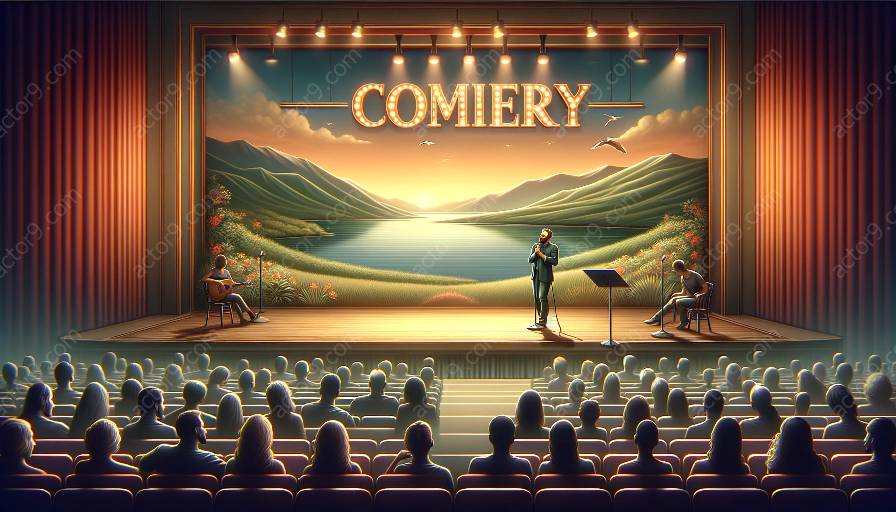
What is the impact of technology and social media on stand-up comedy and social commentary?
Topic
The Role of Comedy Clubs in Social Commentary
View details
Ethics and Responsibility in Stand-up Comedy
View details
Political and Satirical Comedy
View details
The Intersection of Stand-up Comedy and Psychology
View details
Cultural Diversity and Inclusivity in Comedy
View details
Performance Techniques in Social Commentary
View details
Humor as a Form of Activism
View details
Stand-up Comedy in the Digital Age
View details
The Use of Storytelling in Social Commentary
View details
Addressing Taboo Topics through Comedy
View details
Impact of Stand-up Comedy on Social Change
View details
The Influence of Stand-up Comedy on Traditional Theater
View details
The Evolution and History of Stand-up Comedy
View details
Body Language and Physical Comedy in Social Commentary
View details
The Power of Language and Wordplay in Comedy
View details
The Art of Improvisation in Stand-up Comedy
View details
Comedy as a Tool for Public Speaking and Persuasion
View details
Challenges and Rewards of Collaborative Comedy
View details
Cultural Adaptation and Regional Comedy
View details
Impact of Technology and Social Media on Stand-up Comedy
View details
Comedic Persona and Identity in Social Commentary
View details
Relevance and Timeliness in Comedy Topics
View details
Humor as a Catalyst for Social Change
View details
Community Building and Support in Stand-up Comedy
View details
Global Perspectives on Political Comedy
View details
Cultural Significance of Comedy in Society
View details
Psychological Challenges of Comedic Social Commentary
View details
Balancing Entertainment and Meaning in Comedy
View details
Audience Dynamics in Stand-up Comedy
View details
The Future Landscape of Stand-up Comedy and Social Commentary
View details
Questions
What are the key elements of a successful stand-up comedy performance?
View details
How does stand-up comedy impact social change and awareness?
View details
What is the history of stand-up comedy as a form of social commentary?
View details
How can stand-up comedy be used as a platform for discussing sensitive social issues?
View details
What role does timing and delivery play in stand-up comedy and social commentary?
View details
How do comedians use irony and satire to address social and political issues?
View details
What ethical considerations are involved in using humor for social commentary?
View details
What are the psychological benefits of using humor for social commentary?
View details
What is the relationship between stand-up comedy and freedom of speech?
View details
How do stand-up comedians navigate the line between humor and offense when addressing social issues?
View details
What techniques do comedians use to connect with diverse audiences through stand-up comedy?
View details
What is the role of storytelling in stand-up comedy and social commentary?
View details
How does stand-up comedy intersect with cultural and societal norms?
View details
What is the impact of stereotypes in stand-up comedy and social commentary?
View details
How can stand-up comedy be an effective tool for challenging societal norms and expectations?
View details
What are the similarities and differences between stand-up comedy and traditional theater performances?
View details
How do comedians use body language and physical comedy to enhance their social commentary in performance?
View details
What is the significance of language and wordplay in stand-up comedy and social commentary?
View details
What is the role of improvisation in stand-up comedy and social commentary?
View details
How does stand-up comedy contribute to the art of public speaking and persuasive communication?
View details
What is the impact of technology and social media on stand-up comedy and social commentary?
View details
How do comedians adapt their material based on cultural and regional differences?
View details
What are the challenges of addressing taboo topics through stand-up comedy and social commentary?
View details
How do comedians build and maintain their comedic personas for social commentary purposes?
View details
What is the role of timing and relevance in selecting topics for stand-up comedy and social commentary?
View details
How can stand-up comedy be a catalyst for social change and activism?
View details
What is the role of collaboration and community in the world of stand-up comedy and social commentary?
View details
How do comedians leverage humor to address political and global issues in their performances?
View details
What is the cultural significance of stand-up comedy and social commentary in different societies?
View details
What are the psychological and emotional challenges faced by comedians engaging in social commentary through stand-up performances?
View details
How do comedians balance entertainment and meaningful discourse in stand-up comedy and social commentary?
View details
What are the effects of audience dynamics on the delivery of stand-up comedy and social commentary?
View details
What is the future of stand-up comedy and social commentary in the age of information and digital media?
View details


